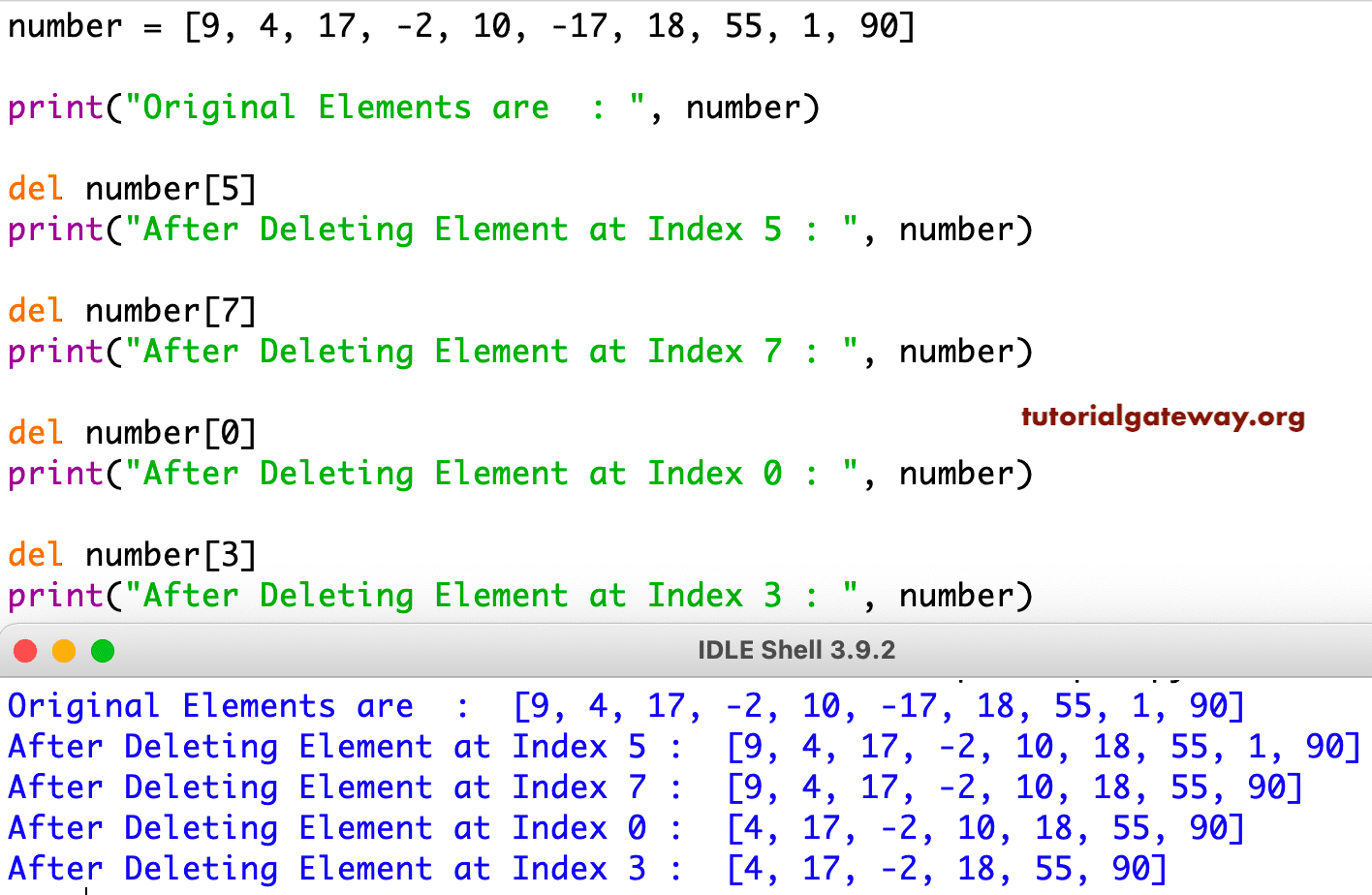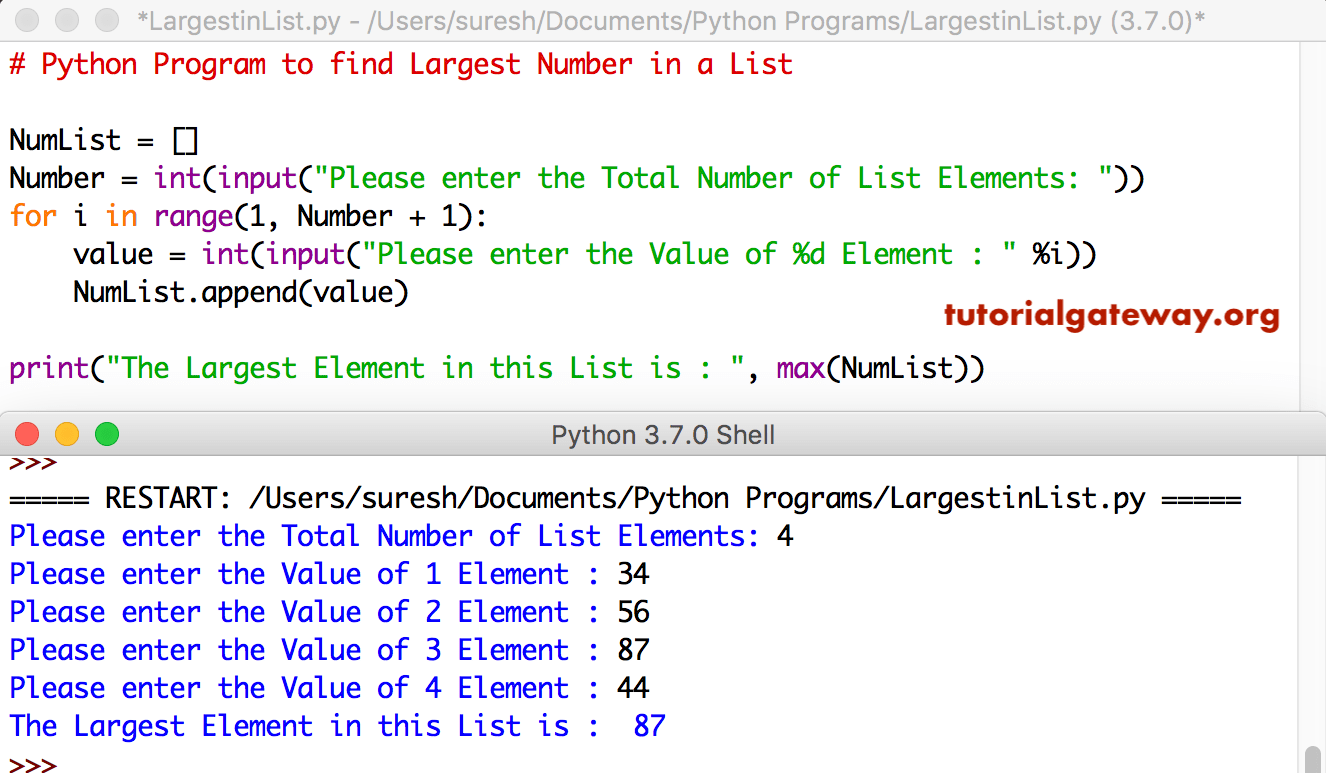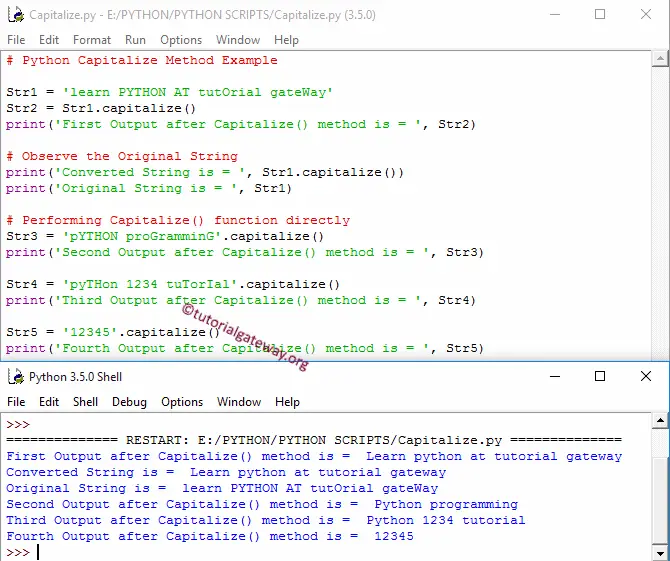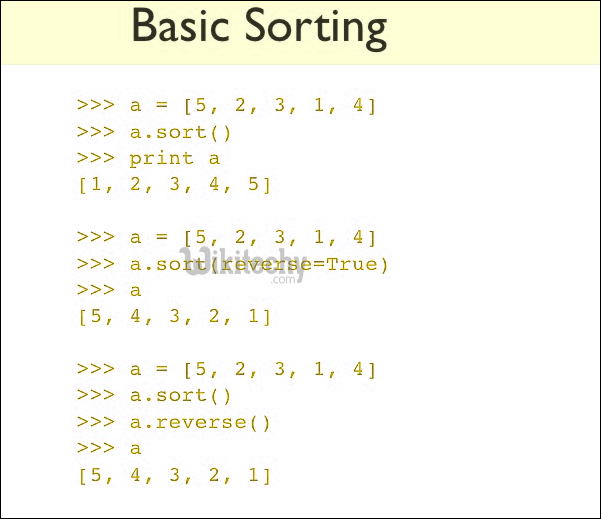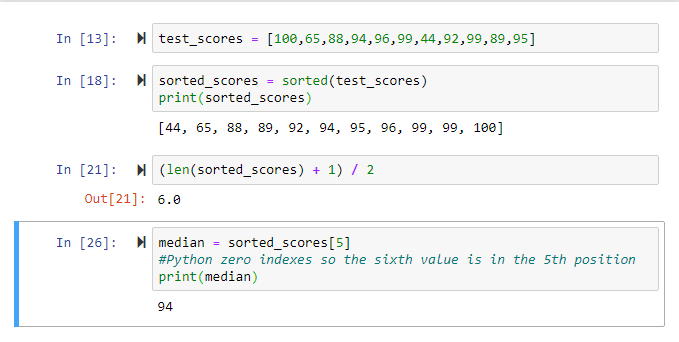In this article, we noticed how one can type the record of parts making use of the sort() way in Python. In this article, we noticed how we had sorted the record in both ascending or descending order making use of the "reverse" parameter with values "True" or "False". If we wish to type in descending order, then we will use the reverse parameter worth as "True".
We additionally noticed the right way to type an inventory of lists applying the lambda method. The type operation is utilized to an inventory of knowledge in any programming language. Tuple, list, and dictionary are utilized in Python to keep a number of data. The values of the tuple and record are accessed by numeric index, and the keys entry the values of the dictionary.
Many built-in capabilities exist in Python to type the record of knowledge in ascending or descending order. The coder can outline the sorting order primarily based on the requirement through the use of this function. The makes use of of the lambda operate for sorting the record and dictionary objects in alternative methods have been defined on this tutorial. The first method to type an inventory of tuples is through the use of the Python sorted() operate that returns a brand new sorted record of tuples.
An different is the listing sort() way that doesn't return a brand new listing however updates the unique listing in-place. Both sorted() and sort() settle for the elective arguments key and reverse to supply further sorting options. Create a python file with the next script to type an inventory of string statistics applying lambda that consists of all variety values. Here, lambda has used contained in the sorted() perform to type the list. Next, the print() perform has used to print the sorted listing with space.
As we noticed inside the above syntax, we now have seen the parameter "key", wherein we will use for customized sorting, which may rework every factor earlier than comparisons. The perform key takes in 1 worth and return one value, the place this returned worth is used for comparisons inside the type method. Let us take the above instance of the record of the fruits, which we sorted based on the size of the letters in descending order. After writing the above code , Ones you are going to print"roll_list1"then the output will seem as a" [('Beneth', 78), ('Cirus', 77), ('Faiz', 79), ('Jack', 76)] ". Here, sort() system is used to type the weather in ascending order and it'll be sorted by its first element.
You can seek advice from the under screenshot for creating python type lists of tuples. The list.sort() system types the record components in place in an ascending manner. To customise the default sorting behavior, use the optionally available key argument by passing a perform that returns a comparable worth for every component within the list. In this article, we're discussing considered one of many techniques of lists. In Python, the record is a knowledge shape that includes a variety of components or an ordered sequence of elements.
The parts inside this listing are called gadgets also. The sort() approach is outlined as sorting of the weather which might be given within the listing in a specified order, similar to both ascending or descending order. This approach can type the listing of things in ascending order by default. When we use this method, the unique listing should not be changed; after making use of this method, you get a unique sorted list.
To type a python record as descending, we'll use reverse parameter of type () method. The default conduct of this parameter is false, so the type perform types as ascending. To convert this as descending, we'll set reverse parameter as True. The Python sorted perform makes it possible for to type an inventory of tuples in reverse order just by passing an elective boolean argument referred to as reverse. By default reverse is False however when you set it to True you'll type the record of tuples in reverse order. When employing the sort() system on a list, the default type system types an inventory containing numeric values so as of their values.
If you employ sort() on an inventory of strings, that record shall be sorted in alphabetical order by default. However, sort() does have two optionally available parameters you should use to vary this default sorting behavior. Lists are certainly one of crucial statistics varieties utilized in Python. But in some cases these lists are combined and we have to style it. We use python style () perform to style Python Lists alphabetically. Here, sort() approach is used with the parameter, and the size is calculated and the factor is sorted in ascending order by its first element.
You can check with the under screenshot for the python style record of tuples by length. First, employing the default parameters which varieties the record situated on the worth of first component of every tuple. Then, a customized operate get_second() is used as a key to style the record situated on the worth of the 2nd component of every tuple. Create a python file with the next script to style an inventory of three tuples employing lambda, the place every tuple incorporates three items. Three forms of sorting have been proven within the script.
The sorting situation is about to zero within the primary sorted function. This will type the listing headquartered on the primary merchandise of every tuple. The sorting situation is about to 1 within the second sorted function. This will type the listing headquartered on the second merchandise of every tuple. The sorting situation is about to 2 within the third sorted function. This will type the listing headquartered on the third merchandise of every tuple.
We are already acquainted with how we will type an inventory of integers, strings, etc. In this section, we'll find out how we will type listing of objects in python. We have mentioned equally the techniques in each element in an effort to have thorough understanding about them.
In python, in case you wish to type an inventory of tuples by the second aspect then we've got the operate referred to as sort() and through the use of lambda operate as a key function. For instance, to type an inventory referred to as names, we write names.sort(). In contrast, to identify the sorted() function, we cross the record as an argument to the function. A tuple is a hard and fast measurement grouping of elements, similar to an co-ordinate.
Tuples are like lists, besides they're immutable and don't change measurement . Tuples play a kind of "struct" position in Python -- a easy approach to move spherical somewhat logical, fastened measurement bundle of values. A operate that should return a number of values can simply return a tuple of the values. The sort() technique types the record of lists in Python in accordance with the primary aspect of every internal list. This technique makes adjustments within the unique record itself.
We use the reverse parameter to type in descending order. By default, the reverse parameter is about to False, that is, it types the listing in ascending order. Also, the important thing parameter is about to None, which means it doesn't use any customized sorting standards by default. On the opposite hand, you'll specify not solely lists however in addition strings and tuples to the sorted() perform that creates a brand new sorted list. Since sorted() returns a list, it should be transformed to a string or tuple.
In python programming, to type the listing of tuples by key we've got the sort() method. There are a few methods of sorting an inventory in python. You can use the listing perform sort() which types the listing in-place. Alternatively, one can type an inventory utilizing the built-in sorted() perform which returns a sorted listing and in addition works on different iterables as well.
Create a python file with the next script to type the nested record applying lambda. An empty record has been declared to shop the values of the sorted list. Here, the nested 'for' loops have used to type the gadgets of the nested list. The outer 'for' loop will iterate dependent on the variety of internal lists outlined within the principle list. The internal 'for' loop will iterate dependent on the gadgets of every internal list.
The sorted() perform has referred to as with the lambda contained in the internal loop to type the nested list. In our lambda function, x.split(' ') provides us the second component in x . Hence, the names record is sorted elegant on final names, which is what we want. We use the return key-phrase to return the results of the sorted list. In Python, there are two ways, sort() and sorted(), to type lists in ascending or descending order. If you need to type strings or tuples , use sorted().
Check the screenshot on python type record of tuples by second element. This operate is a built-in-list process and it types the weather of a given list. Sort() operate accepts the one key argument that identifies the worth and returns the worth for use within the sorting. You additionally can type a python record utilizing the operate sorted().
It's a built-in python operate that may be used used to carry out a sorting operation on any iterable . It takes the iterable as an argument and returns a sorted list. Before we proceed, here's a fast refresher on python lists – Lists are used to shop an ordered assortment of items.
These gadgets could very well be any kind of object from numbers to strings and even an additional list. This makes lists are some of the versatile files buildings in python to keep a set of objects. For more, take a look at our guideline onlists and different files buildings in python. Thus lists are ready to storing sequential or ordered files and it could occur that you just require to type this files as per your need. Python has an inventory perform to type its components – the sort() function.
In this tutorial, we'll observe tips on ways to type an inventory in python. This Python tutorial is a component of our ongoing instruction to programming in Python. While it really is supposed for starting to intermediate developers, it might be a useful reference for veteran programmers as well. In particular, we'll be getting to know tips on ways to type lists in Python applying the sort() method, which is an inventory methodology used to type lists specifically.
We may additionally be taught the sorted() function, which you'll be in a position to use to variety any kind of iterable. Python has many built-in features and techniques supporting us to unravel problems,sort and sorted are used to variety any record of numbers, strings, tuples and objects. We have an inventory of numbers or strings, and we wish to variety the gadgets on this list. Basically, we will both use variety technique or sorted perform to realize what we want. In Python, List has a local perform to variety its gadgets - sort() function.
It might be utilized in several use-cases to type the list. It is an extremely robust perform and may do customized sorting too by delivering lambda function. By default, the sort() perform types strings utilizing Unicode code points. If we wish to make use of another standards for sorting, we will use the important thing argument. To do that, we assign the identify of a perform to the argument.
We'll speak about tips on how to make use of every operate in today's publish and the variations between the two. In addition, we'll speak about alternative methods to switch the type criteria. By default, each capabilities type the strings utilizing Unicode code points, in ascending order.
If you ought to kind employing another criteria, you have to cross further arguments to the functions. If you're aware of arrays in several programming languages then the theory of lists will come naturally to you. The record is among the built-in info sorts in python, which is used to retailer a set of data.
We assume about lists as dynamically sized arrays, which may shop heterogeneous info as well. By dynamically sized arrays, what we imply is that the dimensions of the lists can change through the runtime. Lastly, lists have the property of being mutable, which means we will alter lists even after creating them. Just like an array, the weather of an inventory are indexed, with the index of the primary aspect being 0. Sort() can settle for a boolean argument referred to as reverse which by default is False and types the record in ascending order.
If this parameter is given True, the record shall be sorted in descending order. In the under example, we'll see the right way to type the size of the values of the record in descending order. To type in ascending order, we've to specify the reverse parameter as false or simply specify it as sort() method.
In python, to type record of tuples by length, we've got the sort() system and the parameter ought to be move to get the size of the primary element. In Python, we will use the sort() system to type the weather within the ascending order, and by default, it is going to type the primary element. To type an inventory of lists in descending order, the reverse parameter is used together with the important thing parameter, and the record identify within the sorted() function. Create a python file with the next script to type an inventory of dictionaries utilizing lambda. Each dictionary includes three key-value pairs contained within the list.
The first output will present the sorting headquartered on the code key. The second output will present the sorting headquartered on the identify key. The third output will present the sorting headquartered on the code and identify keys. The fourth output will present the sorting in descending order headquartered on the identify key.


